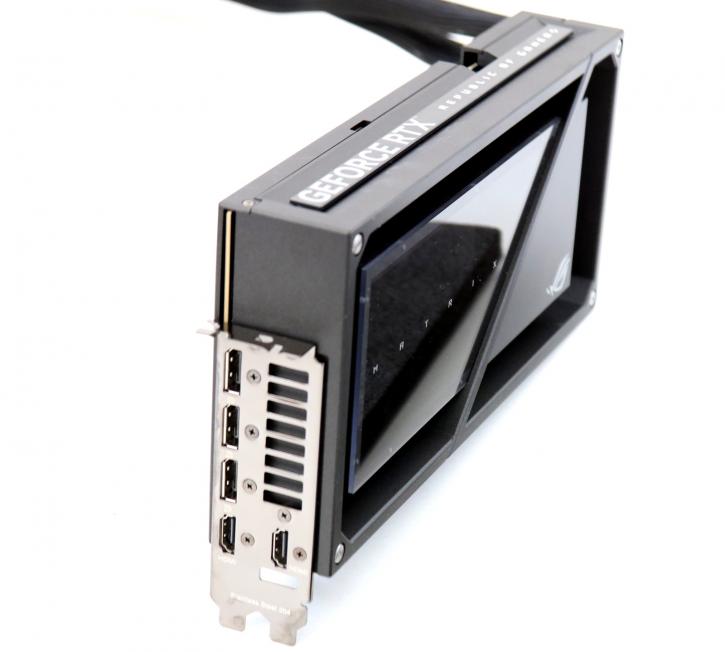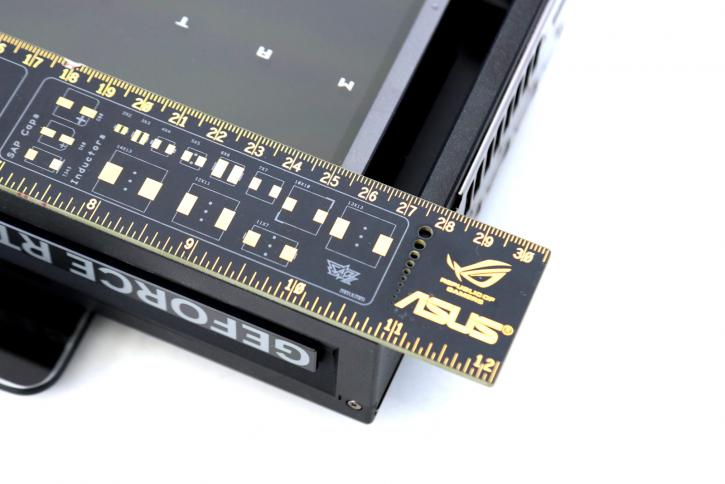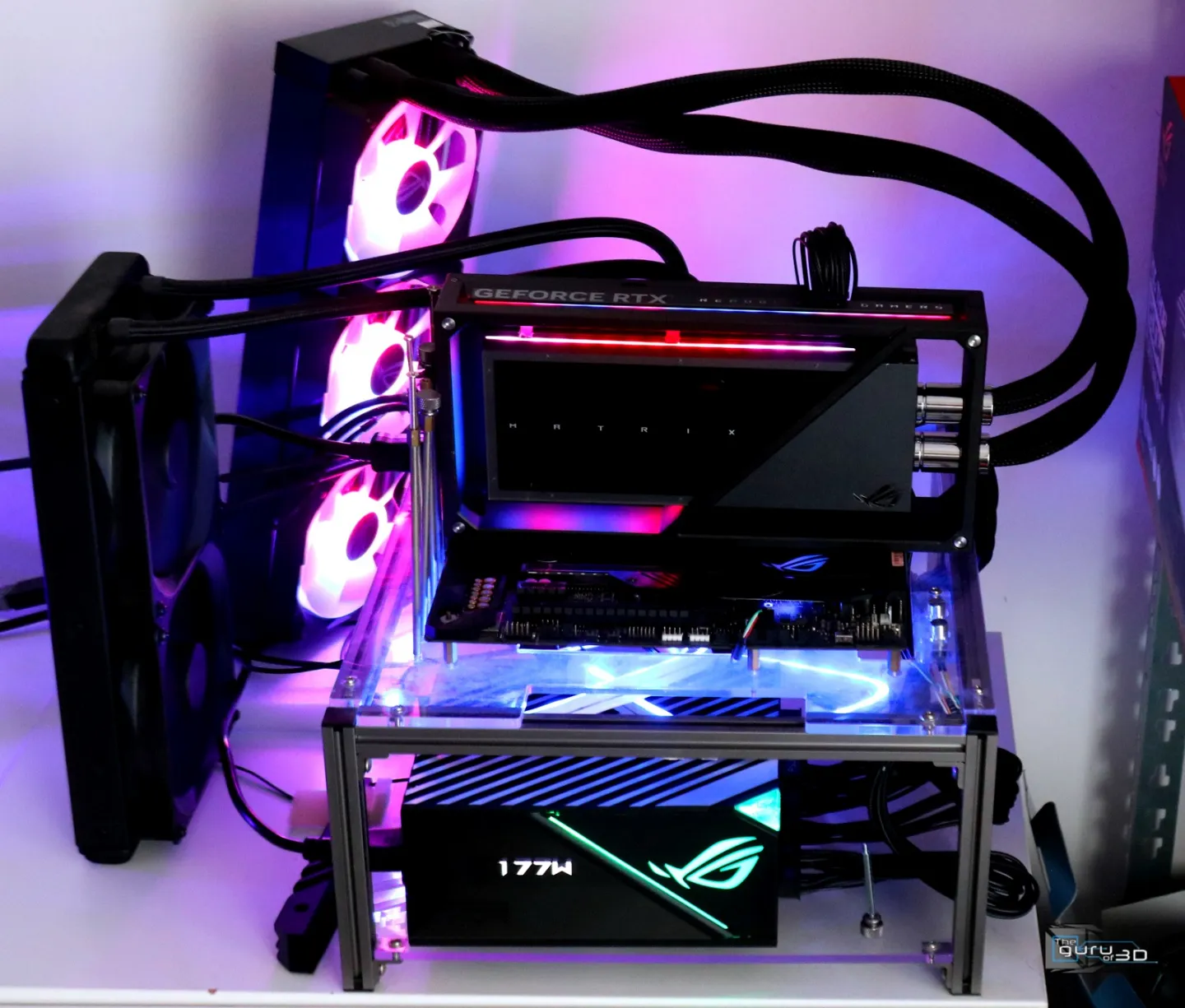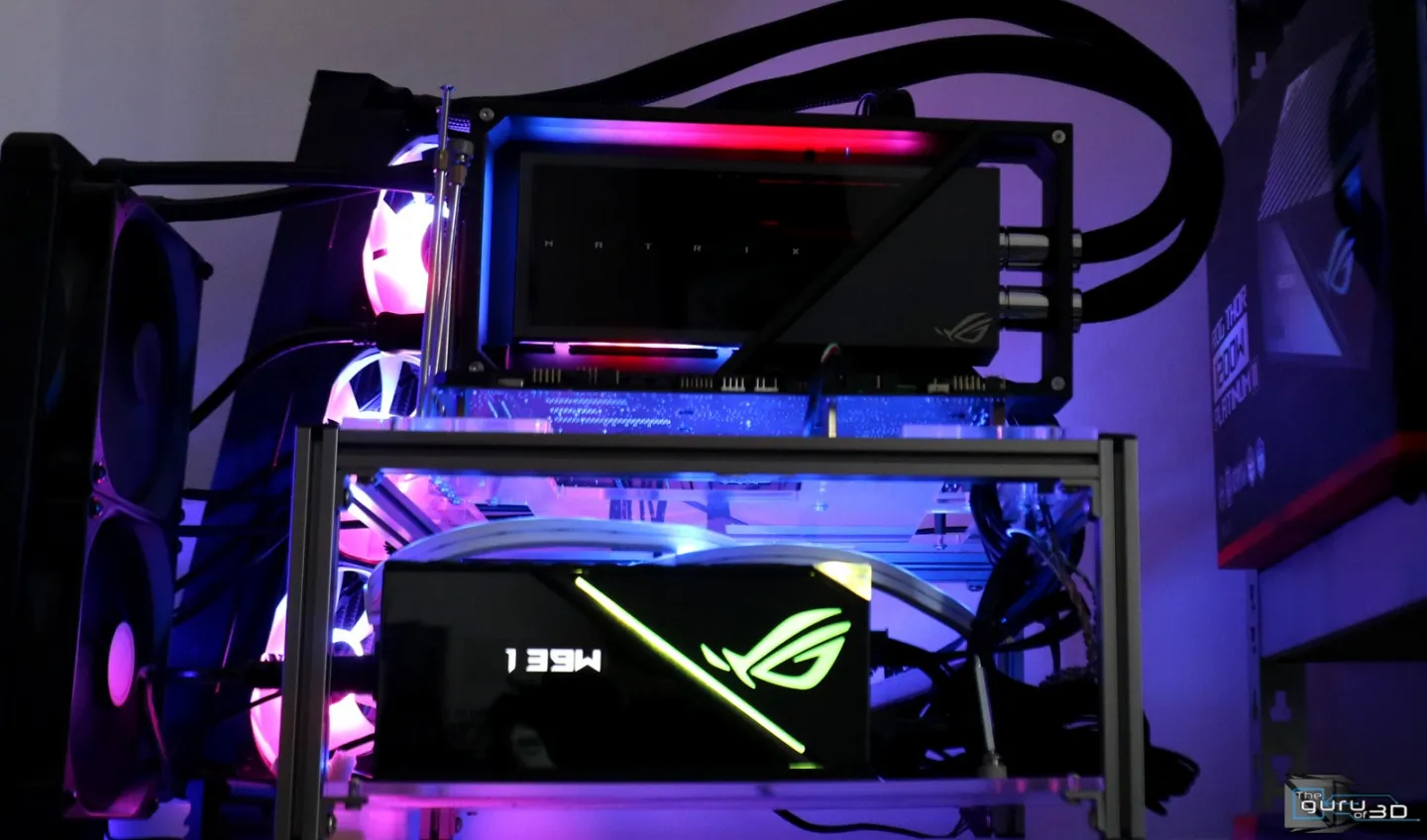Product photos
Product Photos
Nested within the primary outer box resides yet another box, housing the graphics card and its accompanying radiator. The reference RTX 4090 card boasts a peak boost clock of up to 2.61 GHz, while the Suprim Liquid X reaches up to 2.670 MHz (2.700 MHz in OC mode), with a base clock operating around 2.235 MHz.
What sets this card apart is its 360mm AIO water cooling solution, featuring three ROG MF-12S fans equipped with individually controllable RGB LEDs. These fans are cleverly magnetically connected, requiring just one cable for power, discreetly hidden within the cooling tubes of the AIO cooler. ASUS claims that these fans operate at less than 1000rpm, effectively maintaining the GPU temperature at a steady 60 degrees Celsius, even with a TGP of 450W.
Measuring only 28.5 cm in length, this card qualifies as one of the shorter RTX 4090 models, albeit referring to only the component that occupies the PCIe slot.
ASUS further enhances the package with a dual BIOS system, offering preset silent and performance (default) settings. Additionally, it includes a vertical support stand, effectively alleviating concerns regarding the considerable weight of this nearly 2kg behemoth resting on the PCIe slot.
The cooling design of the Asus graphics card is distinctive, with coolant tubes extending from the card's end, which could pose compatibility challenges for certain cases. Yet, it's worth mentioning that when placed within a chassis that can house a 360mm radiator, there should ideally be an 18.8-inch clearance to comfortably accommodate both the card and its tubes. Asus has set an overclocked power limit at 600 watts for this card, up from the standard 550 watts. The company indicates that this is the maximum threshold for optimal performance. Surpassing the 600-watt limit leads to increased heat without any proportional enhancement in clock speeds. For connectivity, the card features three DisplayPort 1.4 and one HDMI 2.1 ports, aligning with expectations. While the card's BIOS option toggles between Gaming and Silent modes, it's noteworthy that the clock rates remain unchanged between these settings. The BIOS option primarily influences the fan curve, with Silent mode trading slightly higher temperatures for a marginal noise reduction.
The card's design is nothing short of spectacular, combining metal and RGB illumination with finesse. The front shroud boasts a brushed metal edge, complemented by two shades of grey. When positioned vertically, two RGB strips surrounding the primary fan introduce a vibrant dash of color. An impeccably sturdy metal backplate aids in heat dispersion, and another adjustable RGB strip and branding adorns the card's edge. The video card itself is enveloped by a distinctive 'hollow' frame.









